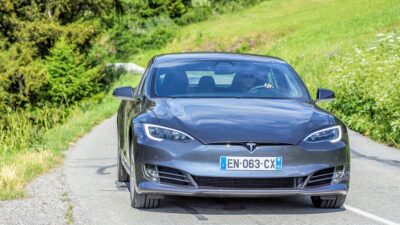As electric vehicles (EVs) continue to gain traction in the automotive market, range anxiety—the fear that a vehicle won’t have enough charge to reach its destination—remains one of the most pervasive myths surrounding EV ownership. Despite advancements in technology and infrastructure, misunderstandings about electric vehicles persist, often stunting their adoption. This article explores and debunks the prevalent myths surrounding EVs, going beyond just range anxiety to reveal a clearer picture of electric mobility.
Myth 1: Range Anxiety is a Deal-Breaker
While range anxiety has historically been a significant concern for potential EV buyers, the narrative is changing. Many modern electric vehicles can travel over 200 miles on a single charge, with some high-end models exceeding 400 miles. Furthermore, the average American drives just about 30 miles per day.
Additionally, the rapid expansion of charging infrastructure—public, private, and residential—has lessened concerns about running out of power on long trips. Many EV owners find that daily charging, whether at home overnight or at work during the day, effectively eliminates range anxiety.
Fact: Confident travel is possible with proper planning.
Myth 2: Charging is Inconvenient and Time-Consuming
A common misconception is that charging an electric vehicle is a lengthy and cumbersome process compared to refueling a gas vehicle. While it’s true that charging can take longer than a quick gas stop, it’s essential to consider charging habits. Most EV owners charge at home overnight, similar to plugging in a smartphone.
Public charging stations, particularly fast chargers, can replenish a vehicle’s battery to 80% in approximately 30 minutes. With more charging stations appearing in urban settings and along major highways, the landscape is becoming increasingly accommodating for EV drivers.
Fact: Charging is often more convenient than you think, especially with home charging options.
Myth 3: Electric Vehicles are Expensive
The narrative that electric vehicles are prohibitively expensive lacks nuance. While some high-end models come with hefty price tags, a growing number of affordable options are entering the market. Federal and state incentives can significantly reduce the upfront cost, making certain models more appealing to budget-conscious consumers.
Moreover, EVs often have lower operating costs in terms of maintenance and fuel. With fewer moving parts and simplified mechanics, electric vehicles generally require less maintenance than their gasoline counterparts.
Fact: The total cost of ownership often favors EVs, especially with incentives and lower operational costs.
Myth 4: EVs Are Not Environmentally Friendly
Another myth surrounding electric vehicles is that they are not as environmentally friendly as they appear, primarily due to the emissions generated during battery production and electricity consumption. While it’s true that battery manufacturing has some environmental impact, various studies indicate that, over their lifetime, EVs produce fewer overall emissions compared to traditional vehicles, especially as the grid becomes greener with renewable energy sources.
Furthermore, advancements in battery recycling and production are contributing to reducing these environmental costs. As technology progresses, the environmental footprint of electric vehicles is expected to become even lower.
Fact: EVs continue to improve in sustainability as battery technologies and energy sources evolve.
Myth 5: Electric Vehicles Lack Power and Performance
Critics often stereotype electric vehicles as sluggish or inadequate in performance. However, many modern EVs boast impressive acceleration and torque thanks to electric motors. High-performance models from brands like Tesla and Porsche have demonstrated that electric vehicles can rival, if not surpass, traditional gas-powered vehicles in speed and driving experience.
Moreover, EVs offer smooth, quiet rides and low center of gravity, enhancing handling and stability.
Fact: Performance and efficiency can go hand in hand with electric powertrains.
Conclusion: Embracing Electric Mobility
As we move towards a more sustainable future, the myths surrounding electric vehicles must be addressed to foster broader acceptance and adoption. From understanding range capabilities to recognizing the cost benefits and performance potential, demystifying electric vehicles can drive public interest and commitment toward eco-friendly transportation.
With continuous advancements in technology and infrastructure, it is clear that electric vehicles are not just a fleeting trend—they are here to stay. The future of mobility is electric, and overcoming the myths associated with it will pave the way for a cleaner, greener world.



